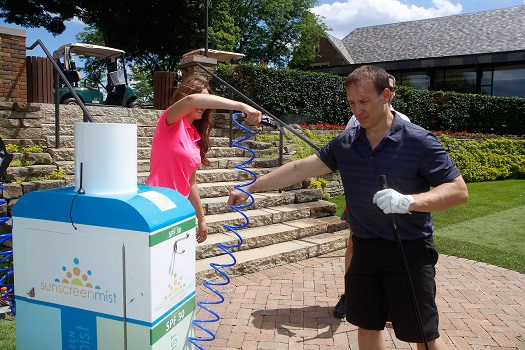
Caucasians are more likely to be diagnosed with Melanoma than other races, says the Society for Investigative Dermatology.
Before you hit the road and tee it up this spring at your destination, don’t forget the sunscreen. You can have fun on the golf course, but you need to protect your skin in the process. According to the American Academy of Dermatology, sun exposure is the most preventable risk factor for all skin cancers, including melanoma, the most serious form of skin cancer that claims 8,700 lives per year.
Melanoma is characterized by the uncontrolled growth of pigment-producing cells that might suddenly appear on the skin or develop on an existing mole. Regardless, the overall number of melanoma cases continues to rise. So, who’s at risk? Melanoma can strike anyone, however, Caucasians are more likely to be diagnosed than other races, says the Society for Investigative Dermatology. Among Caucasians, certain individuals are at higher risk than others. For example:
• You have a substantially increased risk of developing melanoma if you have greater than 50 moles, large or unusual moles.
• Your risk is increased if a blood relative – e.g., your parents, children, siblings, cousins, aunts, uncles – has had melanoma.
• Redheads and blondes have a higher risk of developing melanoma. Blue or green eyes also increase your risk of developing melanoma.
• Your chances increase significantly if you’ve previously had melanoma.
• Your risk for melanoma might also be increased if you have had other previous cancers, such as breast or thyroid cancer.
Here are several tips from the American Academy of Dermatology for drastically preventing melanoma:
• Generously apply a broad-spectrum, water-resistant sunscreen with a Sun Protection Factor (SPF) of at least 30 to all exposed skin. “Broad Spectrum” provides protection from both ultraviolet A (UVA) and ultraviolet B (UVB) rays. Reapply approximately every two hours, even on cloudy days, and after swimming or sweating.
• Wear protective clothing, such as long-sleeved shirt, pants, a wide-brimmed hat, and sunglasses.
• Seek shade when appropriate. Remember that the sun’s rays are strongest between 10 a.m. and 4 p.m. If your shadow is shorter than you are, seek shade.
• Protect children from sun exposure by playing in the shade, wearing protective clothing, and applying sunscreen.
• Use extra caution near water, snow, and sand because they reflect damaging rays of the sun, which can increase your chance of sunburn.
• Get vitamin D safely through a healthy diet that may include vitamin supplements. Don’t seek the sun.
• Avoid tanning beds. Ultraviolet light from the sun and tanning beds is known to cause skin cancer and wrinkling. If you want to look like you’ve been in the sun, consider using a sunless self-tanning product while continue to use sunscreen.
• If you notice anything changing, growing, or bleeding on your skin, see a dermatologist. Skin cancer is very treatable when caught early.
Enjoy golf this spring and summer at your destination, but don’t forget the sunscreen.

Leave a Reply